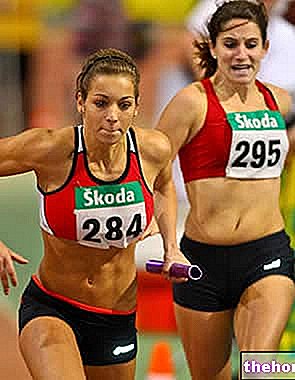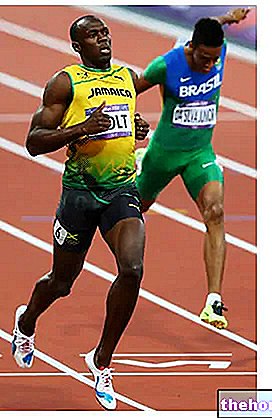Running technique
The technical exercises for fast running in athletics differ in 2 learning blocks which are an integral part of all sessions.

ATTENTION! All technical exercises NEED constant monitoring and possible correction by the technician; moreover, regardless of the presence or absence of the coach, these exercises ALWAYS start slowly and develop more dynamically after the athletic gesture is sufficiently stabilized. .
1st phase of the technique for fast running: technical exercises in warm-up and souplesse
The technical exercises for fast running in athletics essentially provide for specific COMPLETE and non-SEGMENTARY executions of the gesture; moreover, the sprinter begins perfecting the movement right from the warm-up and souplesse through some clarifications techniques to say the least essential and preparatory to the specific complete gesture. These clarifications are:
- Advancement of the free limb with the knee slightly flexed (avoiding the pendular action of the leg)
- Making contact of the forefoot (from top to bottom) with the floor
- Cushioning and thrust foot response, with complete extension of the limb and opening of the ankle joint
- Positioning of the hips "over the" support and torso erect, also in line with the extension of the propulsive limb
- Coordinated swing movement of the bent arms ...
... all done with ease and complete muscle relaxation.
2nd phase of the technique for fast running: technical exercises focused on specific aspects of the movement with POSSIBLE development of extensive endurance and strength
In this phase, the stretches begin to increase in intensity but proportionally decrease their duration; now they are looking for the accentuation of the rebound on the ground and the increase in the flexion-lifting of the knees by passing the heel of the free limb under the buttock (not behind it), while the arms continue their parallel oscillation even if slightly wider.
Alongside the technical learning of running, some more physical exercises but always of a SPECIFIC character are then placed side by side (first secondly and later with the same importance); these have the "objective of point out some details referring to the STEP and intervene in the stimulation of the fast force.
NB: in an advanced phase (NOT for beginners!), They will evolve on the development of extensive resistance and on that of the force, obviously by means of small overloads such as weighted belts and jackets.
In "athletics, these executions are called" FUNDAMENTAL exercises of "training for fast runs" and may include some evolutions or elaborations to be inserted ONLY when the athlete demonstrates a sufficient technical-performance level.
Fundamental technical exercises for fast running
- Run kicked behind: it is a running action with low advancement in which the knee of the free limb remains low and the foot of the active leg rises behind the buttock; the torso remains in an upright position and the arms support the movement of the legs
- Run kicked under: evolution of the previous one, with greater advancement of the knee of the free limb and rise of the heel under the buttock and not behind
- Skip with different interpretations: reduced advancement, involves the elevation of the free flexed limb (in reaction of rebounding on the ground with the foot) until the thigh reaches the horizontal position. The foot can rise below the buttock or below the knee, as long as the pushing limb is fully extended and the pelvis remains located "above" the support.
- Sprinted race: it is a "hyper-running action; the fully extended push limb makes a decisive forward impulse while the bent free limb advances with greater knee support until the thigh is horizontal with respect to the ground. foot will make a contact with the ground of the forefoot below the knee, hinting an action brand (scratched). The torso is tilted forward while the arms perform a wide and coordinated movement.
The technical exercises are essential for the athlete to refine their running style; they will be followed by exercises suitable for the development of different athletic abilities: speed training and endurance training, further splitting speed resistance, lactic anaerobic resistance and aerobic endurance.
Speed and endurance training for fast "athletics" runs
Bibliography:
- The Handbook of the Athletics Coach - First part: general information, races and walking - Study & Research Center - pag. 61-62.




























